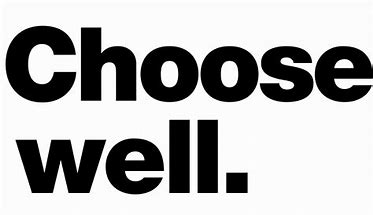When most people think of preventative medicine, they consider doing certain diagnostic tests every so often, visiting their physician once a year, getting a flu shot, taking a multi-vitamin, and maintaining good hygiene. All of these are certainly important. From age 50, people need to have a colonoscopy every 10 years. Women should have periodic mammographies. Our children get vaccines from infancy. A blood test once a year after age 40 is also a great idea.
Are these preventative measures all we need for preventing illness and disease? Is there a lot more to it that we tend to ignore?
Priorities
The United States spend over 3 trillion dollars on health care per year. That translates into roughly $10,300 per person. How much of all this money is put toward prevention? 3 percent—that’s right 3%. What would happen if more people just didn’t get sick to begin with? Isn’t it time to change our priorities and begin to live a healthy lifestyle so we can stay out of the doctor’s office and stop supporting the pharmaceutical companies?
We mostly view medicine and doctors as treating conditions that already exist. Perhaps you have a sore throat, fever, or stomach pain. You go to the doctor, get the problem diagnosed, and if necessary, medication is given. Perhaps your blood pressure is high, you are diabetic, or you have chest pains. You go to the doctor, or the emergency room, to get treatment. This is what most of medicine has become. Most doctors don’t deal with real preventative medicine-they don’t really even have time to do that! Preventative care needs to be redefined.
There is a real problem with our current approach. Up to two thirds of deaths worldwide and about half in the United States are due to preventable behaviors and exposures. So doesn’t is make more sense to put the emphasis on prevention?
The current lifestyle

Let’s start with the following presumption—and this may be news to you. Getting adult diseases as we age is NOT inevitable. That’s right. Western living and Western lifestyle has created a situation where we have a sedentary lifestyle and we eat what is convenient, not what is good for us.
We can simply look at Japan before and after World War II. Once American influence took hold, and the West exported fast food and cars there, heart disease, diabetes and high blood pressure all creeped into their society. Yemenite Jews while living in Yemen also had no heart disease or diabetes. When they immigrated in mass to Israel in the 1950’s, it only took a few years until they too began suffering from the Western adult diseases. What we clearly see from this is that our food and lifestyle are the main sources of our medical problems. In order to reduce our chances of heart disease, cancer, infectious diseases, chronic respiratory disease, and diabetes, we must take positive preventative actions. So let’s see what our new version of preventative medicine should look like.
Education
It is still surprising to me to see the lack of health education in our school systems. It should start early on. Children in first grade need to learn how to wash their hands and brush their teeth correctly. Usually a nurse can come in and explain on an elementary level proper technique and can also explain why taking care of basic hygiene is so important.
As children get a little older, they can be taught about the basics of healthy eating. Fruits and vegetables are healthy, rugalach and borekas are not. Whole grains are better than refined grains. What are the food groups? How do we know if we are getting basic nutrition? None of this has to be complicated, just the basic.
Finally, we also need to explain the dangers of poor nutrition and lack of exercise and activity. Most people I meet do not understand the correlation between poor lifestyle habits and sickness. Overweight and obese people have a shorter life expectancy and their quality of life is poor. People who keep their weight in check, eat right and exercise will live longer, on average, and will reap the benefits of having a high quality of life.
For children and adolescents, it is activity which can make the biggest difference. Start by having your child walk or bike to and from school. Have them get on and off buses a stop or two from the bus stop. Use stairs and not elevators. Schools must be encouraged to incorporate physical activity into the school day! Formal programs are needed in the schools to introduce exercise and activity into our children’s lives. This can even be fun, enjoyable and rewarding, even without being competitive.
In the home
In the end of the day though, education starts at home. We all know this to be true, and it applies to everything – including health education! If children see their parents model good health habits, they will emulate many of these behaviors, too. Setting the proper example is imperative for parents. Are you serving enough fruits and vegetables? Are you trying to use whole grains most of the time? Is there a limit on the treats and junk food served in the home?
If you are the parent, it is difficult, and most likely detrimental, to try to impose your will concerning healthy food on your children. However, there are a few things you can do that will encourage better and more nutritious eating for your kids. First, always have good choices available. Your children might be used to coming home and taking a snack bag of chips or something similar, but if on the kitchen table, there are vegetable sticks and cut up fruit, eventually your children will begin to sample them and might even enjoy them. In the summer months, slices of melon and watermelon can easily take the place of candy and ices. The changeover won’t be instantaneous, but gradually, they will go for the healthier choices.
Practical Applications
It is difficult within to articulate all the aspects of healthy living and how exactly to practice preventive medicine. It ranges from not smoking, staying away from smokers, using seat belts and driving safely to alterations in diet, activity, exercise, and stress management. No one is going to be perfect, but making the effort to lead a healthy lifestyle is well worth it. Think about money and time, let alone quality of life. You don’t have to spend time going from doctor to doctor, test to test and sifting through a bureaucracy every time you need a test or a drug. You will be able to be more productive in your daily life and you will simply feel much better all the time.
It’s all important
The items we mentioned at the beginning of this article, well visits to our doctors, good hygiene, diagnostic tests at various stages of life, vaccinations, and taking medication are of course very important. However, we must place a priority on learning what good health habits are, what good nutrition is, how to put exercise into our lives, and learn a better way to deal with the stresses of life. If enough of us would take this on—if our schools would be on board—we could create a health revolution and “add hours to your day, days to your year and years to your life.”


Leave A Comment